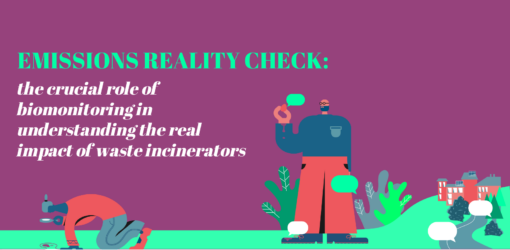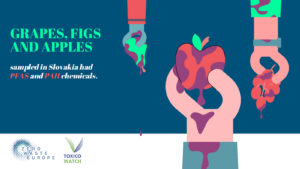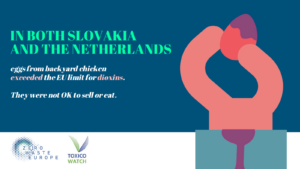
Emissions reality check: the crucial role of biomonitoring in understanding the real impact of waste incinerators
As people and communities’ demands for sustainable waste management solutions intensify globally, waste incinerators are often promoted by the industry as a viable solution to reduce landfill use and generate energy. The European incinerator plants are often described by industry players as modern and safe” in terms of their environmental performance. However, the potential health and environmental impacts of these facilities are a major concern. This is where biomonitoring research comes in as an invaluable tool to help us secure a cleaner and safer environment.
What is biomonitoring?
Biomonitoring is the scientific technique of measuring the presence of toxic chemicals in biomatrices (i.e. living organisms). It offers direct evidence of how much pollution affects human health and the environment.
This method is at the heart of the ambitious The True Toxic Toll project led by Zero Waste Europe (ZWE) in collaboration with ToxicoWatch Foundation across five European countries: Belgium, France, The Netherlands, Slovakia, and Spain. The project assesses the real impacts of waste incinerators on local communities – information that is both timely and critical.
What has biomonitoring research around waste incinerators found?
The recent biomonitoring data and results from Slovakia, the Netherlands, and Spain give us a clear picture of the situation on the ground. Detailed analysis of meticulously gathered samples — including eggs from backyard chickens, vegetation, fruit, roof dust, water, and sediment — from the vicinity of the investigated facilities has revealed high levels of persistent organic pollutants (POPs) in food and nearby vegetation.
POPs include substances like dioxins and furans, often called ‘silent killers’ due to their toxic, bioaccumulative and long-persistent nature. Specific effects of POPs can include cancer, damage to the nervous system, reproductive disorders, and disruption of the immune system.
Click on the gallery to see more of the main biomonitoring research results in Slovakia and the Netherlands for backyard chicken eggs and fruit samples.
What do these results mean?
For our quality of life, health, and wellbeing
Every one of us – but especially people living near waste incinerators and similar facilities – must be informed about the true toxic toll of incineration emissions on our health and environment.
The early biomonitoring findings serve as a wake-up call to the true harmful effects of waste incineration emissions. Among other things, they emphasise the urgent need for comprehensive environmental assessments before further expanding waste incineration facilities or capacity. By detecting contaminants in the food and vegetation near these facilities, biomonitoring research offers concrete evidence that waste incineration may be putting the health of nearby communities at risk. At the very least, they show that the way incineration emissions are legally measured is inaccurate and does not tell the full story.
This data is not just a collection of numbers and scientific terms — it represents the living experiences of everyday citizens. For communities living in the shadow of these incinerators, the findings validate their concerns and fears about health risks. Biomonitoring empowers these communities, arming them with the evidence needed to demand accountability and safer conditions. It transforms abstract environmental risks into visible, undeniable, quantifiable, and worrying realities that industry leaders and policy-makers must address at once.
For circular economy legislation and a zero waste future
Moreover, biomonitoring data can guide more informed decisions on waste management policies and practices. The results stress the need for stricter regulations and highlight the areas where existing policies fall short – i.e. to promote sustainable alternatives to waste combustion.
It also confirms that moving towards a circular economy with safer materials and reduced problematic waste fractions – for example, by eliminating plastics such as PVC, which are associated with dioxin and furan emissions when burned – can significantly reduce overall potential toxic emissions. For policy-makers, this research is a valuable resource around the (in)effectiveness of current environmental protection measures and the need for rigorous enforcement.
For movement building and thriving communities
Zero Waste Europe’s initiative also serves as a model for other regions struggling with similar issues. It demonstrates the power of collective action and scientific research in environmental advocacy, empowering communities to further make their concerns and rights heard by using science-based evidence to influence policy and improve public health outcomes.
Biomonitoring as a tool for a healthier, safer future
As we navigate the complexities of modern waste management, the benefits of biomonitoring research to assess the real impact of waste incinerators cannot be overstated. This critical tool not only informs, but also protects, public health and the environment. Cooperation between civil society, research organisations, and communities – like the one that forms the base of “The True Toxic Tol”l campaign and project – is essential to ensure that moving towards sustainable waste solutions does not come at the cost of human health or ecological integrity.


